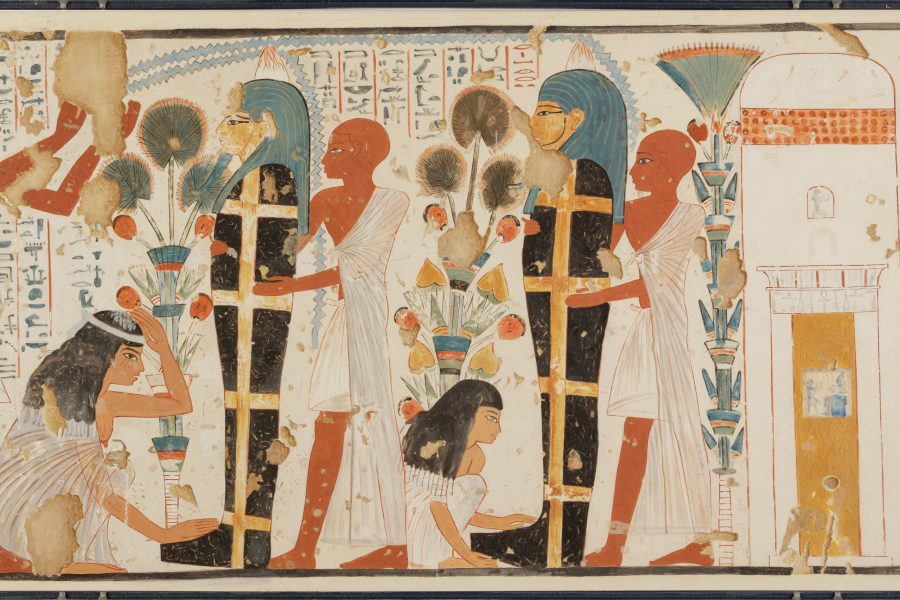In a predominantly desert landscape, gardens were places of luxury and indolence. The flowers, trees and berries which grew there and along the riverbanks held great significance to the ancient Egyptians. This short course will consider depictions of the natural world in tombs, temples, and on papyri, in addition to archaeological evidence. We will also examine the practical use of these natural elements incorporated into objects, prescriptions, and textual references as appropriate.
We will begin considering the heraldic flowers of ancient Egypt – the papyrus and the water lily, (often referred to as a lotus), which symbolised Upper and Lower Egypt, often bound together to create a united Egypt. We will discuss the solar association of these flowers and their links with the divine.
Our second lecture will review the importance of the garden, providing shade and sustenance. We will examine the role of the garden in the afterlife, concentrating on poppies, cornflowers, and pomegranates, as the produce of the garden.
Our last lecture will focus on trees. As providers of shade, fruit, timber and resins, trees were highly valued in ancient Egypt. In addition to practical uses, many trees were associated with the celestial, being markers of time. Furthermore, they were linked to Mother goddesses providing substance.
Maximum 20 places.
Ticket price covers all three classes ( 3, 10, 17 April 2024 )
Ticket price includes refreshments.















